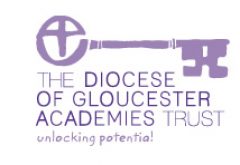Action Research Area: Developing conversation and therefore children’s understanding during verbal feedback
Autumn 2017-Spring 2018
Researchers: Bethany Massey and Donna Harding (Hardwicke Parochial Primary Academy)
Context: EYFS (Mathematics) and Year 4 (Literacy)
Desired Outcomes: To use ‘NIKI’ (Now I Know It) time as a tool to give verbal feedback to a group of children. Therefore, allowing them to respond to the verbal feedback they are given and take ownership of their learning.
Following a staff meeting, which focussed on the results of a book scrutiny, we discovered that pupil polishing pens and verbal feedback were not being used as effectively as they could be. Children were not responding to comments given and often ‘purple polishing’ time was seen as an extra job rather than a tool to accelerate learning. We decided that there must be a simple way to address this and worked together to create the idea of ‘NIKI’ (Now I Know It) time which is used alongside valuable and constructive feedback with a small group of children.
What is NIKI time?
In Reception, NIKI time takes place after all groups have completed their focused maths activities. The children with the same mis-conceptions or areas for development meet with the character NIKI to address this. A mind map is produced with the children and their comments and developments are jotted down to show the learning that has taken place.
In Year 4, we spend the first 5 minutes of every session looking back over the teacher comments and responding to marking. It is during this time that the teacher will take a small group of children who all have the same target/next steps. The teacher will explain what they need to work on and children will spend the time editing their work to reflect upon their learning. They will then be able to write out the letters NIKI into their books and to explain what they now know and have learnt with an example.
Evaluation:
Methods
EYFS – general observations (target tracker) of children after completing a focused activity. Is the teachers input evident in their play?
Year 4 – interviews of children regarding their opinion of how marking effects their learning and if verbal feedback helps them to improve their next piece of writing.
Results:
Children in Reception have become aware that the character NIKI is there to help them learn. Children have been observed saying they, “Want to do it like NIKI showed them” when choosing or competing tasks in the enhanced provision.
Learner A – struggled to touch count during a simple addition focused task. They were included in NIKI time that week which focused on touch counting the total. In the following focused task learner A was able to touch count the numicon to find the new total. In addition to this was able to complete a ‘must do job’ involving an addition machine, touch counting his answer.
In Year 4, it is obvious to see the progress of children’s learning when looking at their next piece of work. Children are able to reach their target immediately. For example, if children have been given verbal feedback on using commas after fronted adverbials and have then used a ‘NIKI’ to explain what they now understand, they are more likely to use the commas accurately in their next piece of work. The evidence is seen clearly when looking through pupils’ books.
Children in Year 4 commented on our new NIKI time by stating, “It helps me to understand what I need to do to help me get better with my writing.”
“I think if helps me to write out my NIKI because it makes sense to me.”
Conclusion:
1. Pupils have benefitted from understanding their verbal feedback
2. Our time has been used well, benefitting the children and not adding un-necessary workload
3. Pupils are more involved with their learning and enjoy taking ownership and explaining what they can now do.
